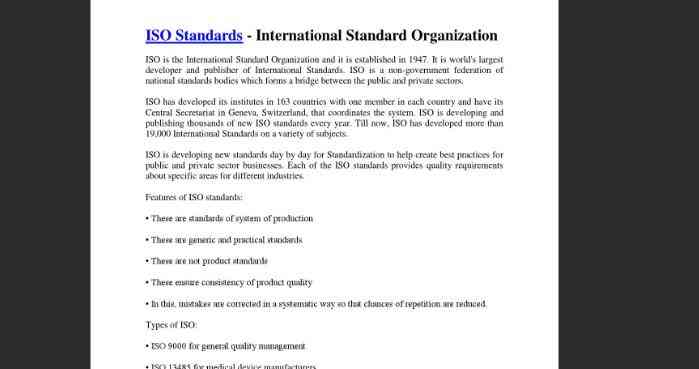|
SIST EN 60305:1997
01-november-1997
Insulators for overhead lines with a nominal voltage above 1 kV - Ceramic or glass
insulator units for a.c. systems - Characteristics of insulator units of the cap and
pin type (IEC 305:1995)
Insulators for overhead lines with a nominal voltage above 1 kV - Ceramic or glass
insulator units for a.c. systems - Characteristics of insulator units of the cap and pin type
Isolatoren für Freileitungen mit einer Nennspannung über 1 kV - Keramik- oder
Glasisolatoren für Wechselpannungssysteme - Kenngrößen von Kappenisolatoren
Isolateurs pour lignes aériennes de tension nominale supérieure à 1 kV - Eléments
d'isolateurs en matière céramique ou en verre pour systèmes à courant alternatif -
Caractéristiques des éléments d'isolateurs du type capot et tige
Ta slovenski standard je istoveten z: EN 60305:1996
ICS:
29.080.10 Izolatorji Insulators
29.240.20 Daljnovodi Power transmission and
distribution lines
SIST EN 60305:1997 en
2003-01.Slovenski inštitut za standardizacijo. Razmnoževanje celote ali delov tega standarda ni dovoljeno.
---------------------- Page: 1 ----------------------
SIST EN 60305:1997
---------------------- Page: 2 ----------------------
SIST EN 60305:1997
---------------------- Page: 3 ----------------------
SIST EN 60305:1997
---------------------- Page: 4 ----------------------
SIST EN 60305:1997
---------------------- Page: 5 ----------------------
SIST EN 60305:1997
---------------------- Page: 6 ----------------------
SIST EN 60305:1997
NORME CEI
INTERNATIONALE
IEC
305
INTERNATIONAL
Quatrième édition
STANDARD
Fourth edition
1995-12
Isolateurs pour lignes aériennes de tension
nominale supérieure à 1 000 V —
Eléments d'isolateurs en matière céramique
ou en verre pour systèmes à courant alternatif —
Caractéristiques des éléments d'isolateurs
du type capot et tige
Insulators for overhead lines with a nominal
voltage above 1 000 V —
Ceramic or glass insulator units for
a.c. systems —
Characteristics of insulator units of the cap
and pin type
© CEI 1995 Droits
de reproduction réservés — Copyright — all rights reserved
Aucune partie de cette publication
ne peut être reproduite ni No part of this publication may be reproduced or utilized in
utilisée sous quelque forme
que ce soit et par aucun pro- any form or by any means, electronic or mechanical,
cédé, électronique ou mécanique, y compris la photocopie et including photocopying and microfilm, without permission
les microfilms, sans l'accord écrit de l'éditeur. in writing from the publisher.
Bureau Central de la Commission Electrotechnique Internationale 3, rue de Varembé Genève, Suisse
Commission Electrotechnique Internationale
CODE PRIX
International Electrotechnical Commission
PRICE CODE F
IEC
MemuiyHapOAHan 3nerlrpoTeXHH4ecKae IiOMHCCHa
• Pour prix, voir catalogue en vigueur •
For price, see current catalogue
---------------------- Page: 7 ----------------------
SIST EN 60305:1997
305 ©IEC:1995 – 3 –
INTERNATIONAL ELECTROTECHNICAL COMMISSION
INSULATORS FOR OVERHEAD LINES
WITH A NOMINAL VOLTAGE ABOVE 1 000 V -
Ceramic or glass insulator units for a.c. systems -
Characteristics of insulator units of the cap and pin type
FOREWORD
1)
The IEC (International Electrotechnical Commission) is a worldwide organization for standardization
comprising all national electrotechnical committees (IEC National Committees). The object of the IEC is to
promote international co-operation on all questions concerning standardization in the electrical and electronic
fields. To this end and in addition to other activities, the IEC publishes International Standards. Their
preparation is entrusted to technical committees; any IEC National Committee interested in the subject dealt
with may participate in this preparatory work. International, governmental and non-governmental organizations
liaising with the IEC also participate in this preparation. The IEC collaborates closely with the International
Organization for Standardization (ISO) in accordance with conditions determined by agreement between the
two organizations.
2) The formal decisions or agreements of the IEC on technical matters, express as nearly as possible, an
international consensus of opinion on the relevant subjects since each technical committee has representation
from all interested National Committees.
3) The documents produced have the form of recommendations for international use and are published in the
form of standards, technical reports or guides and they are accepted by the National Committees in that
sense.
4) In order to promote international unification, IEC National Committees undertake to apply IEC International
Standards transparently to the maximum extent possible in their national and regional standards. Any
divergence between the IEC Standard and the corresponding national or regional standard shall be clearly
indicated in the latter.
5) The IEC provides no marking procedure to indica
...














